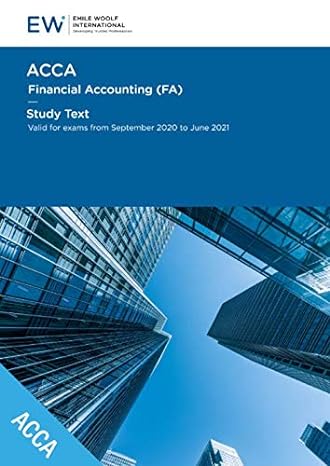Question
Consider a firm F that generates a single cash-ow in one year which depends on the state of the economy: -Boom (probability 1/2) 5m -Recession
Consider a firm F that generates a single cash-ow in one year which depends on the state
of the economy:
-Boom (probability 1/2) 5m
-Recession (probability 1/2) 1m
-F has 2,000 bonds outstanding with face value $1,000 and a 6% coupon, one year matu-
rity.
-There are no taxes, and the risk free rate is 3%
-F has 1m cash at the beginning of year 1.
-F's cost of debt is 4% regardless of the payout policy they choose.
F can distribute at the beginning of year 1 either 70% of its cash or 30% of its cash. The
cash retained by the firm is invested at the risk free rate.
Stockholders invest the dividend they receive at the beginning of year 1 at the risk free
rate as well.
1) Which of the two payout policies maximize stockholder payoffs at the end of year 1?
2) Anticipating that the firm will choose to payout 70% of its cash at the start of year
1, the market value of the firm's bonds is 1.5m, calculate the expected bankruptcy
costs on the firm's assets.
3)Suppose instead that the market value of the bonds are 2m regardless of the payout
policy chosen. The required return on the firm's assets is 10%, and the required
return on equity if the firm had zero cash is 12%. Which of the two payout policies
will the firm's shareholders optimally undertake and why?
Step by Step Solution
There are 3 Steps involved in it
Step: 1

Get Instant Access to Expert-Tailored Solutions
See step-by-step solutions with expert insights and AI powered tools for academic success
Step: 2

Step: 3

Ace Your Homework with AI
Get the answers you need in no time with our AI-driven, step-by-step assistance
Get Started


